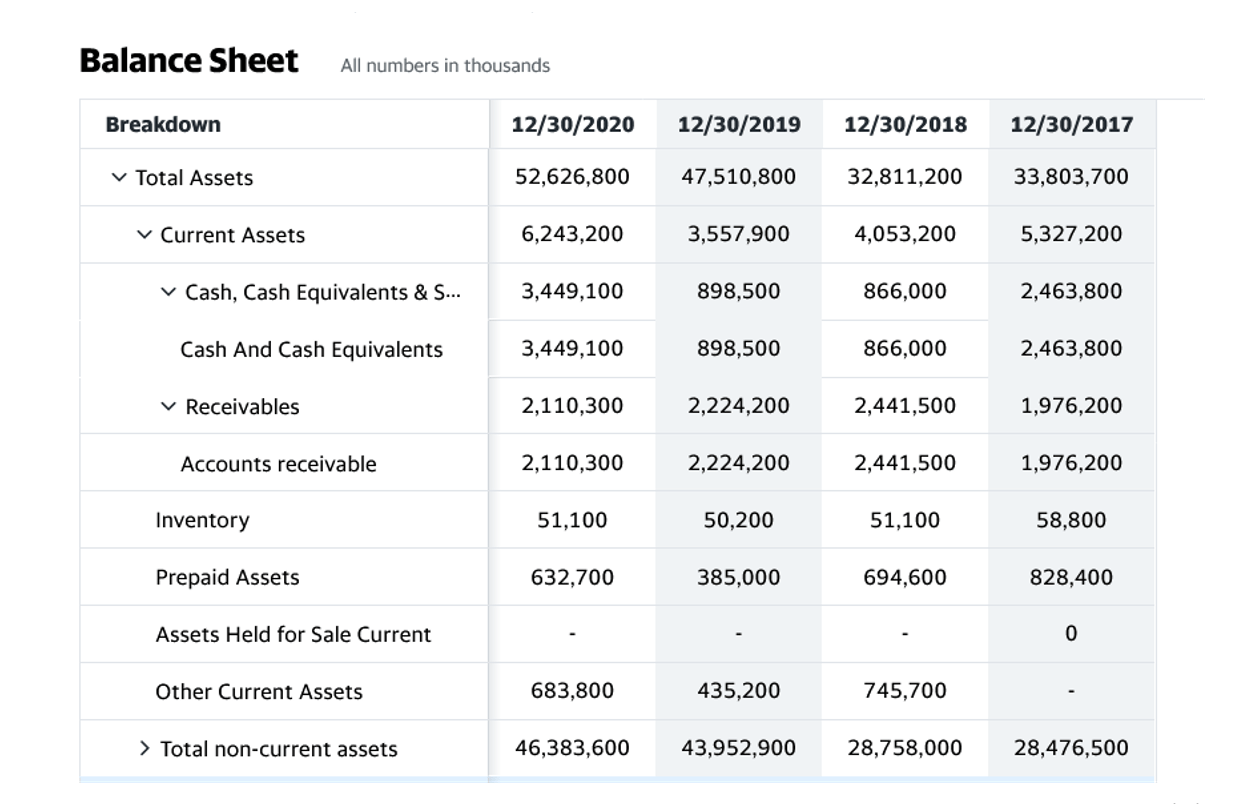Content

Reconciling items may be caused by timing differences, general ledger errors (e.g., sub-ledgers errors, manual journal entries), or errors in the other sources of financial data (e.g., bank errors). A critical element of the account reconciliation process is the resolution of differences. Please refer to the Accounting Manual for University standards on how to properly resolve and account for differences identified during the reconciliation process. Account reconciliation is the process of comparing internal financial records against monthly statements from external sources—such as a bank, credit card company, or other financial institution—to make sure they match up. Knowing how to reconcile your accounts accurately is essential for the financial health of your business, as it helps to detect any errors, discrepancies, or fraud. External data typically used for comparison include bank statements, merchant processing reports, inventory counts, supplier invoices, credit card statements, payroll reports, and loan statements. This process ensures that transactions are properly coded, valued and are valid, since adjustments to the general ledger account balance are made if balances do not match.
And simultaneously, the ability to scale to the demands of today’s mid-and large-sized companies. Stop letting manual data entry slow down your month-end close process with Vena. Gives management a timely and accurate picture of last period’s performance. This is a check or money transfer you’ve issued and recorded on your books which is still uncleared. We’re going to look at what bank statement reconciliation is, how it works, when you need to do it, and the best way to manage the task.
Step One: Comparing Your Statements
Vena automates time-consuming financial close processes, e.g., data collection, account reconciliation and inter-company transactions. Today’s modern accounting, enterprise resource planning and GL systems have built-in controls to prevent unbalanced journal entries from being posted to the general ledger. The tricky part comes with exceptions—accounts that don’t match their corresponding sub-ledgers or other transaction systems. Account reconciliation is the bedrock of accurate, efficient, compliant and timely financial statement delivery. Account reconciliation must be treated as a priority and critical path in the period-end close process to provide a complete and accurate picture of a company’s financial performance.
As such, some experts recommend weekly reconciliations rather than monthly, and most accounting software packages can facilitate daily cash reconciliations. Balance sheet reconciliation and attestation is probably the most important part of the period-end close for a company, especially those that are public, multi-national, or in heavily-regulated industries. It consists of confirming the accuracy and integrity of all key account trial balances by explaining each balance and if required, substantiating it with additional entries, document attachments, and explanation notes. Often times, there are sub-ledgers involved (containing a sub-set of transactions that explain the trial balance) which may be available in completely different data formats. The whole process can get very painful with multiple sources of data, hundreds or thousands of accounts, and dozens of people with interdependent tasks coming into play. Accounting schedules are a common way business owners keep track of their financial information.
90% of companies manually reconcile using Microsoft Excel spreadsheets in order to do so. Automating reconciliation can significantly reduce aforementioned errors and increase efficiency. BlackLine Account Reconciliationsis designed to streamline all aspects of the account reconciliation process. It adds proper controls and automation, imports data from any source, and is compatible with all major ERP systems. Ensure all of the company’s balance sheet accounts are reconciled currently. You don’t want to find that some of these accounts have not been reconciled and have undetermined errors.
UP Fintech Holding Limited Reports Unaudited Third Quarter 2021 Financial Results – GlobeNewswire
UP Fintech Holding Limited Reports Unaudited Third Quarter 2021 Financial Results.
Posted: Tue, 30 Nov 2021 08:00:00 GMT [source]
The frequency of reconciliations depends on the nature of the business and the types of reconciliation. Reconciling vendor accounts will result in them being paid on time. This is critical to ensure that day to day operations are maintained.
Accurate, up-to-date, reconciled financial records show the true state of operations, and therefore are a better basis for making business decisions. For example, cash reconciliation helps an SME owner better manage cash balances to prevent overspending, or overdrawing bank accounts. Bank reconciliation is the process of matching the transactional data coming from a bank statement with the relevant internal company data . The aim is to verify that each transaction in the bank statement is consistent and comparable to the internal records as presented in the company’s accounts.
What Are The Benefits Of Reconciliation Tools?
If an account that should have a debit balance has a credit balance or vice versa, pull the activity in that account and evaluate each transaction to find the error. This section discusses the elements of the accounting reconciliation process and how it is conducted internally within Indiana University. Information presented below will walk through what account reconciliation is, how to complete this closing procedure, and requirements and best practices related to this process.
This helps to make sure that general ledger account balances are accurately reflected. To ensure the reliability of the financial records, reconciliations must, therefore, be performed for all balance sheet accounts on a regular and ongoing basis. A robust reconciliation process improves the accuracy of the financial reporting function and allows the finance department to publish financial reports with confidence. CPAs must apply appropriate materiality to analyze these items both individually and in the aggregate and to determine the effect of such items on a quarterly and year-to-date basis. Any uncorrected/unrecorded adjustments the auditor found in the current period also should be included.

When the services or products are provided, the deferred revenue should be reclassified to revenue on the income statement . Proper reconciliation of the General Ledger balance would include a detail listing of customers, payment purpose of account reconciliation dates, and when the product or service pre-payments will be adjusted to revenue. Accrued Payables are recorded via JV when goods or services have been received, but the vendor has not yet invoiced the University for payment.
Purpose Of Balance Sheet Account Balance Reconciliations
Businesses maintain a cash book to record both bank transactions as well as cash transactions. The cash column in the cash book shows the available cash while the bank column shows the cash at the bank. Save money without sacrificing features you need for your business. For example, your cash account shows a balance of $1,000, so you decide to buy a $780 computer.
Additional information about the Statement for Financial Position is available in the Balance Sheet Account Reconciliations section of the Gateway to Financial Activities website. Reconciliations should most commonly be completed on Excel spreadsheets. When completing the reconciliation, reference the Banner Fund number and account code being reconciled, as well as the month and year.

What’s more, it’s a process that’s ripe for automation—but frequently done in a manual, time-intensive and error-prone manner. Cash-to-revenue reconciliation is one key exception to the focus on reconciling balance sheet accounts.
Preparing frequent bank reconciliations can limit the amount of time spent on this accounting function at month’s end. Business owners can also find it and correct bank errors quicker than using a monthly reconciliation process. Bank reconciliations help business owners ensure all cash transactions are recorded properly on the accounting ledger and bank statement. Regardless of the cost and effort involved in the reconciliation process, no other internal control is as capable of identifying misstatements in balance sheet accounts. Bank reconciliations require business owner to compare their detailed bank statement against the company’s internal cash account. Business owners compare each deposit, check, withdrawal and bank fee to ensure all information matches between the internal and external accounts.
It’s required before month/year-end reports, and financial statements are issued. Automate your account reconciliations and accelerate your month-end close with Vena. The general ledger is the complete record of every financial transaction your company undertakes.
You only need to reconcile bank statements if you use the accrual method of accounting. This is to confirm that all uncleared bank transactions you recorded actually went through.
We’ll do one month of your bookkeeping and prepare a set of financial statements for you to keep. The more frequently you reconcile your bank statements, the easier it is each time. Once you’ve figured out the reasons why your bank statement and your accounting records don’t match up, you need to record them. (Also called deposits in transit.) This is money that has been received by your company and recorded on the books, but which has not been processed by the bank. We’ll go over each step of the bank reconciliation process in more detail, but first—are your books up to date?
Adjustments To Books Balance:
Reconciling your bank statements lets you see the relationship between when money enters your business and when it enters your bank account, and plan how you collect and spend money accordingly. Any credit cards, PayPal accounts, or other accounts with business transactions should be reconciled. You could get that from a statement, from online banking, or by having the bank send data straight to your accounting software. If you run a current account and a credit card account, you’ll need both statements. This section outlines general requirements and best practices related to performing account reconciliations. This type of reconciliation is done to confirm a company’s internal records correspond to what is being recorded by the POS, Merchant, or Gateway system. In addition to ensuring that internal records are correct, these reconciliations also provide evidence that customer orders and payments are recorded correctly.
- For example, companies which sell goods will need to conduct a stock take to ensure that the inventory value in the balance sheet accurately reflects the value of goods held in storage.
- Configurable validation rules allow for the auto-certification of low-risk accounts, significantly reducing the workload of accounting staff.
- There are several types of tools accountants can use to perform account reconciliations.
- As such, some experts recommend weekly reconciliations rather than monthly, and most accounting software packages can facilitate daily cash reconciliations.
- In addition to quarterly reconciliations, some account balances must be reconciled and reviewed monthly.
- We offer online accounting and bookkeeping services that are designed to help your firm become financially sound and, most importantly, profitable!
Manual reconciliations are plagued by a lack of accountability, miscommunication, lost time, and missed opportunities. Automating reconciliations makes the process smooth, transparent, and fast. It could be the case that a transaction hit the wrong account or was manually entered incorrectly so there’s a typo in the amount. Reconciling accounts often will enable you to catch these mistakes. There are different types of reconciliations that can be performed on a personal or business basis. The good news is that you can automate any type of reconciliation.
A Cash Book Note:
Finally, when correcting journal entries are required, theBlackLine Journal Entryproduct automates this portion of the process as well. Be the first to know when the JofA publishes breaking news about tax, financial reporting, auditing, or other topics. Select to receive all alerts or just ones for the topic that interest you most. See for yourself why a full-spectrum FP&A Cloud is the ideal account reconciliation solution. Processes that rely on error-prone data can easily lead to costly consequences for any business—particularly publicly traded or otherwise regulated companies. Modern, full-spectrum FP&A platforms offer everything from account reconciliation to scenario analysis through a single system.
And if they are not in agreement, making necessary adjustments or identifying and explaining differences. Typically, accounting transactions for campus entities are recorded to revenue and expense accounts. These entries adjust balances on the Budget/Expense Summary reports.

Reconciliation is the comparison of individual object codes within the general ledger with source documents and subsidiary ledgers and systems. For example, source documents include external sources, timesheets, inventory listings, contracts, capital asset listings, bank or credit card statements. In addition, reconciliation means ensuring transactional activity has occurred as expected and individual accounting transactions are accounted for and supported.
The cost per day is then multiplied by the number of days since the last meter reading date shown on the utility bills that have already been recorded. If a transaction isn’t showing on your bank statement, it’s most likely because you got income that you didn’t bank, or you paid for something out of a different account or with cash. Bank reconciliation happens when you compare your record of sales and expenses against the record your bank has. Enter the ending balance from your statement into the corresponding field in your accounting software or ledger. Get a copy of the current statement for the account you are reconciling. In most cases, this will be a bank statement or a credit card statement.
Process
Transactions, such as checks, may hit your bank statement a few days after you make a deposit. These timing differences between money leaving accounts and being added to others can be delayed, which can cause mismatching balances.
Author: Kate Rooney
Leave a Reply